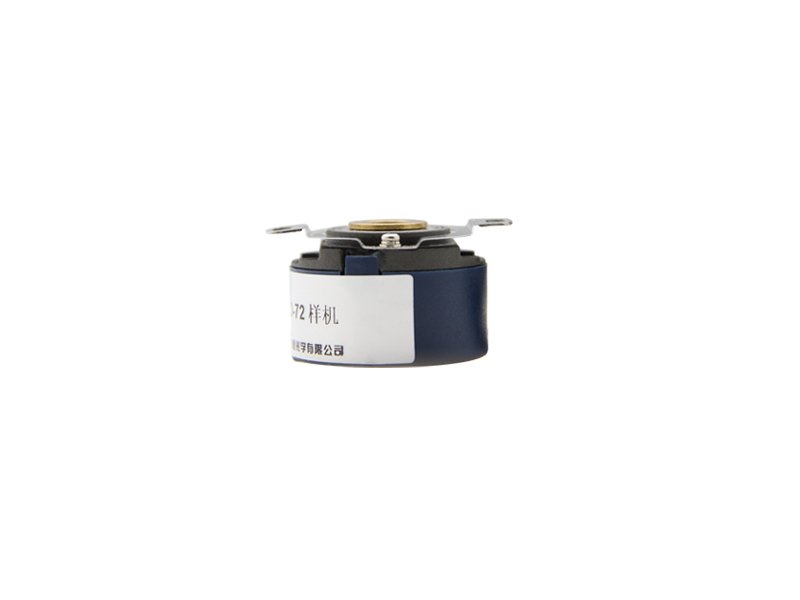What is an angle encoder?
Release time:
2023-02-24
What is an angle encoder? In recent years, with the rapid development of instruments, encoders have played a huge role in production. They are widely used in robots, elevators, wind power, CNC machine tools, engineering machinery, tobacco machinery, printing machinery, oil and gas, packaging machinery, textile machinery, food machinery, auto parts production lines, precision painting, welding and other modern industrial fields, such as precision position control, industrial automation and control production lines, encoders not only have broad development prospects in the market, but also favored by the market. Today, Runxin encoder takes you to understand!
What is an angle encoder?
In recent years, with the rapid development of instruments, encoders have played a huge role in production. They are widely used in robots, elevators, wind power, CNC machine tools, engineering machinery, tobacco machinery, printing machinery, oil and gas, packaging machinery, textile machinery, food machinery, auto parts production lines, precision painting, welding and other modern industrial fields, such as precision position control, industrial automation and control production lines, encoders not only have broad development prospects in the market, but also favored by the market. Today, Runxin encoder takes you to understand!

Overview of angle encoders
Angle encoders usually determine the measurement position, while rotary encoders determine the direction.
The rotary encoder can only confirm whether it is a forward rotation or a flip and the rotation speed. In addition to determining these, the angle encoder can also determine the current position, such as the stop state of the motor
It is a speed displacement sensor with integrated photoelectric technology. When the rotary encoder shaft drives the grating disc to rotate, the light emitted by the light-emitting element is cut into intermittent light by the slit of the grating disc and is received by the receiving element to generate an initial signal. After the signal is processed by subsequent circuits, a pulse or code signal is output. It has the characteristics of small size, light weight, many varieties, complete functions, high frequency response, high resolution, small torque, low energy consumption, stable performance and reliable service life
A axis-centered photoelectric code disc on which a loop-through dark dash is provided, which is read by the photoelectric transmitting and receiving devices to obtain four sets of sine wave signals combined into A, B, C, and D, each with a phase difference of 90 degrees (360 degrees relative to the periodic wave). C and D signals are inverted and superimposed on A and B phases to enhance the stable signal; In addition, one Z-phase pulse is output per revolution to represent the zero reference bit.
Encoder material
The encoder disc is made of glass, metal and plastic. Glass discs are made of thin streaks deposited on glass. It has good thermal stability and high precision. The metal code disc is directly connected, with or without scribing, not easy to break. However, due to the thickness of the metal, the accuracy is limited, and its thermal stability is an order of magnitude lower than that of glass. The plastic code tray is economical and low in cost, but it has high precision, good thermal stability and poor service life.
Encoder resolution
Resolution - The number of passing lines or dark lines provided by the encoder per 360 degrees of rotation is called resolution, also known as analytical index, or how many lines are called directly, usually in the range of 5 to 10000,<> lines per revolution.
Encoder signal output
Signal outputs include sine wave (current or voltage), square wave, open collector (PNP, NPN), and push-pull. TTL is a long-term differential drive (symmetric a, a, b, b, z, z). HTL is also known as push-pull or push-pull output. The interface of the encoder signal receiving device should correspond to the encoder.
Encoder signal connection
The pulse signal of the encoder is usually connected to a counter, PLC and computer. Modules connected to PLCs and computers can be divided into low-speed modules and high-speed modules. The switching frequency can be low to high. For example, a single-phase connection is used for one-way counting, one-way velocity measurement, and A.B two-phase connection is used for forward and reverse counting, judging forward and reverse, and speed measurement. A, B, Z three-phase connection for position measurement with reference bit correction, A, A-, B, B-, Z, Z- connection. Due to the connection with the symmetrical negative signal, the mode noise in the subsequent differential input circuit is controlled, and only useful differential mode signals are taken, so it has strong anti-interference ability and can be transmitted over long distances.
previous page
next page
Related news


